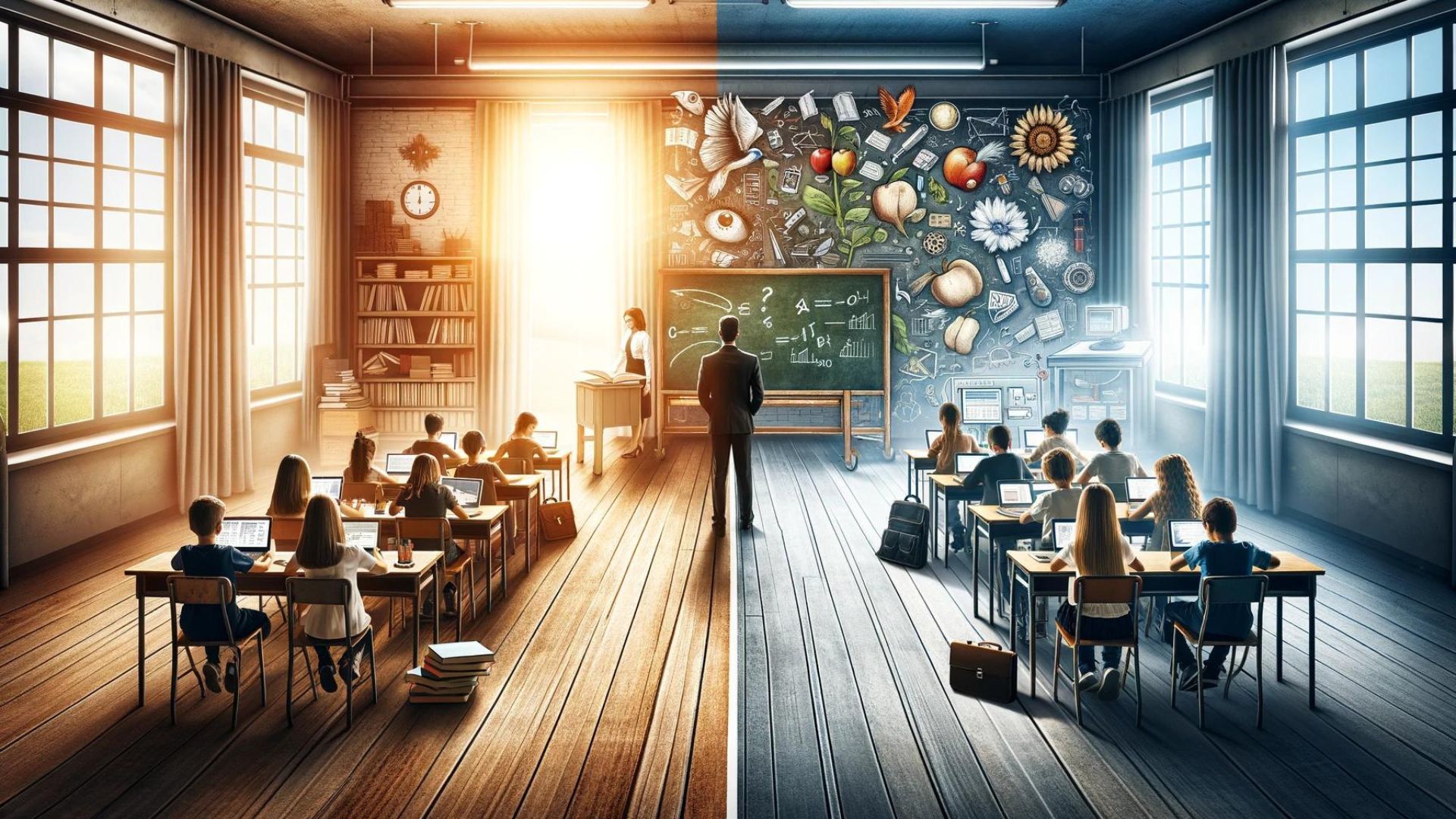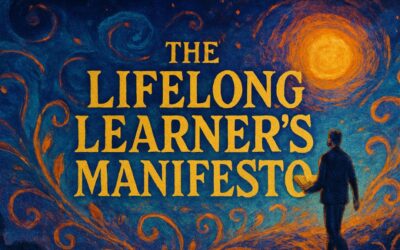Article Audio
In a world that’s rapidly evolving with technology, the landscape of education is undergoing a significant transformation. The debate between traditional teaching methods and the integration of technology in education has been a topic of discussion among educators, parents, and policymakers. The key to a successful educational strategy lies not in choosing one over the other but in finding the right balance between technology and traditional teaching methods. This balance can create a holistic learning environment that prepares students for the complexities of the modern world while retaining the fundamental values of education.
The Case for Combining Forces
Consider the story of Ms. Thompson, a veteran history teacher who decided to embrace technology in her classroom. Initially skeptical, Ms. Thompson began by incorporating simple digital tools into her lectures, such as interactive timelines and virtual museum tours. This not only captured her students’ attention but also deepened their understanding of historical events by making them more relatable and engaging. Ms. Thompson’s journey exemplifies how traditional teaching, when augmented with technology, can enrich the learning experience without losing the essence of the subject matter.
On the other side of the spectrum, Mr. Lee, a computer science teacher, recognized the importance of hands-on learning and critical thinking. While his subject inherently relied on technology, he introduced peer discussions and whiteboard sessions to brainstorm coding algorithms before jumping onto computers. This blend of traditional teaching methods fostered a collaborative learning environment and enhanced problem-solving skills among his students.
Real-Life Impact and Examples
In schools around the globe, the integration of technology with traditional teaching methods has shown promising results. For instance, flipped classrooms, a model where students learn new content online by watching video lectures, usually at home, and what used to be homework (assigned problems) is now done in class with teachers offering more personalized guidance and interaction with students, have been successful in various subjects. This approach leverages technology for information dissemination and traditional classroom interaction for deeper learning.
Another example is project-based learning, where students work on a project over an extended period, which culminates in a final product or presentation. Incorporating technology tools for research, collaboration, and presentation, while maintaining traditional aspects like critical thinking and mentorship, has proven to enhance students’ engagement and understanding of complex concepts.
Challenges and Considerations
Balancing technology and traditional teaching methods is not without its challenges. The digital divide, or the gap between individuals with access to modern information and communication technology and those without, can exacerbate inequalities in education. Furthermore, the effective integration of technology requires teachers to be adequately trained and comfortable with these tools, a feat that demands time, resources, and support from educational institutions.
A Call to Action
The journey towards balancing technology and traditional teaching methods in education is ongoing and dynamic. As educators, parents, and stakeholders, it’s imperative to advocate for policies that provide equal access to technology, invest in teacher training, and encourage the development of curricula that blend the best of both worlds.
Let’s take inspiration from the stories of Ms. Thompson and Mr. Lee and strive to create learning environments that foster curiosity, engagement, and a deep understanding of subjects through the thoughtful integration of technology and traditional teaching methods. Engage in discussions with educators, participate in school board meetings, or volunteer in local schools to contribute to shaping the future of education.
As we move forward, remember that the goal is not to replace traditional teaching methods with technology but to complement them in a way that prepares our students for the future while grounding them in the timeless principles of learning. Together, we can bridge the gap and build an education system that is diverse, inclusive, and equipped to face the challenges of the 21st century.
Why Should You Care?
Education is the bedrock of individual growth and societal advancement. The integration of technology with traditional teaching methods is critical because it shapes how effectively we can educate future generations. It’s about creating robust learning environments that combine the best of both worlds to better prepare students for the demands of the modern world.
Key Takeaways:
- Synergy is Key: The best educational outcomes are achieved when technology complements traditional teaching methods, not replaces them.
- Enhanced Engagement: Technological tools, when used appropriately, can significantly increase student engagement and interest.
- Preparation for the Future: Balancing both teaching methods prepares students with a more comprehensive set of skills for the digital age.
- Addressing the Digital Divide: Acknowledging and working to close the digital divide is vital to ensure equitable educational opportunities.
- Continuous Professional Development: Teachers require ongoing training to integrate new technologies effectively into their teaching.
Keywords and Definitions:
- Balancing Technology and Traditional Teaching: The act of integrating digital tools and traditional instructional methods to enhance learning.
- Flipped Classroom: An educational model where students learn new content online and apply that knowledge in a classroom setting.
- Digital Divide: The gap between those who have access to modern information technology and those who do not.
- Project-Based Learning: A teaching method where students gain knowledge by working on a project over a period of time.
- Interactive Learning: Learning that involves active engagement between the teacher, the student, and educational content, often enhanced by technology.
- Teacher Training: The process of educating teachers in new methodologies, including the use of technology in the classroom.
- Critical Thinking: The ability to analyze and evaluate an issue in order to form a judgment, crucial in both traditional and technology-aided education.
- Collaborative Learning: Learning that involves students or teachers working together, which can be facilitated by both traditional and digital means.
- Educational Policy: Guidelines and rules that govern educational practices, including the use of technology in classrooms.
- Lifelong Learning: The ongoing, self-motivated pursuit of knowledge, which modern educational strategies seek to instill.
Frequently Asked Questions:
How can technology in education enhance traditional teaching methods rather than distract from them?
Technology, when used strategically, can provide interactive, immersive learning experiences that traditional methods alone may not offer. For instance, virtual reality can bring historical events to life, and online platforms can facilitate peer collaboration beyond classroom walls, deepening understanding and retaining student interest.
What measures can be taken to ensure all students have access to technology in education?
Addressing the digital divide requires policies and investments that provide schools with the necessary infrastructure, offer affordable internet access, and supply students with personal learning devices. Additionally, teacher training in digital literacy ensures that all students benefit from technology-enhanced learning.
Myth Buster:
Myth: Traditional teaching methods are obsolete in the age of technology.
Reality: Traditional teaching methods have foundational value and are crucial for developing critical thinking, problem-solving skills, and direct interpersonal interactions. Technology enhances these methods, but it does not render them obsolete. The most effective education uses a combination of both.
Let’s Talk:
- How do you think technology has changed the learning experience in your life or in the lives of students today?
- What are some creative ways we can integrate technology in education while preserving the benefits of traditional teaching methods?
- How can educators ensure that technology is a tool for learning rather than a distraction?
I encourage you to share your insights and experiences in the comments section. Your contributions can provide valuable perspectives on how we can all work together to enhance the educational journey for learners today and in the future.










0 Comments